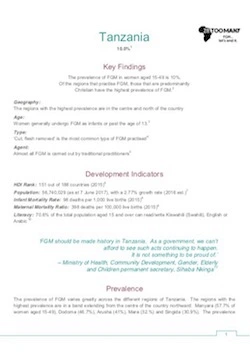Home | Research & Resources | Tanzania
Key Findings
The prevalence of FGM/C among women aged 15-49 in Tanzania is 10%.
Of the regions that practise FGM/C, those that are predominantly Christian have the highest prevalence of FGM/C.
Geography
The regions with the highest prevalence are in the centre and north of the country
Age
Women generally undergo FGM/C as infants or past the age of 13
Type
‘Cut, flesh removed’ is the most common type of FGM/C practised
Agent
Almost all FGM/C is carried out by traditional practitioners
Distribution of FGM/C across Tanzania
The prevalence of FGM/C varies greatly across the different regions of Tanzania. The regions with the highest prevalence are in a band extending from the centre of the country northward: Manyara (57.7% of women aged 15-49), Dodoma (46.7%), Arusha (41%), Mara (32.%) and Singida (30.9%). The prevalence in all other regions is below 15%. Women who live in rural areas are more likely to be cut (12.7% of women aged 15-49) than women who live in urban areas (5.3%).
There is little data available on relative prevalence according to women’s religion; however, 95.1% of women aged 15-49 who have heard of FGM/C state that they do not believe it is required by their religion.
95% of women aged 15-49 state that they believe FGM/C should be stopped.
Trends in FGM Prevalence in Tanzania
Between 2010 and 2016, the overall prevalence for women aged 15-49 fell from 14.6% to 10%. Due to the large age-range of women included, however, the overall prevalence alone may not fully reflect the progress that has been made in recent years. Breaking down the most recent data by age group shows that the prevalence for women aged 45-49 is 18.7%, while for the youngest age group this has fallen to 4.7%. Despite the fact that a small proportion of women may be cut after the age of 15, the data demonstrates a clear trend towards lower prevalences among younger women.
FGM/C Legislation in Tanzania
The main law criminalising FGM/C in Tanzania is Article 21 of the Sexual Offences Special Provisions Act 1998, which inserted a new Section 169A(1) into the Penal Code prohibiting FGM/C on girls under the age of 18 years. Anyone who has custody, charge or care of a girl under the age of 18 who causes her to undergo FGM/C commits the offence of child cruelty. Enforcement of the law is variable, and cases rarely reach court.
Development Indicators
Population Growth
56,740,029 (as at 7 June 2017), with a 2.77% growth rate (2016 est.)
Infant Mortality
98 deaths per 1,000 live births (2015)
Maternal Mortality
398 deaths per 100,000 live births (2015)
SDG Gender Index
Ranked 112 out of 144 countries with a score of 55.7% (2022)


.webp)
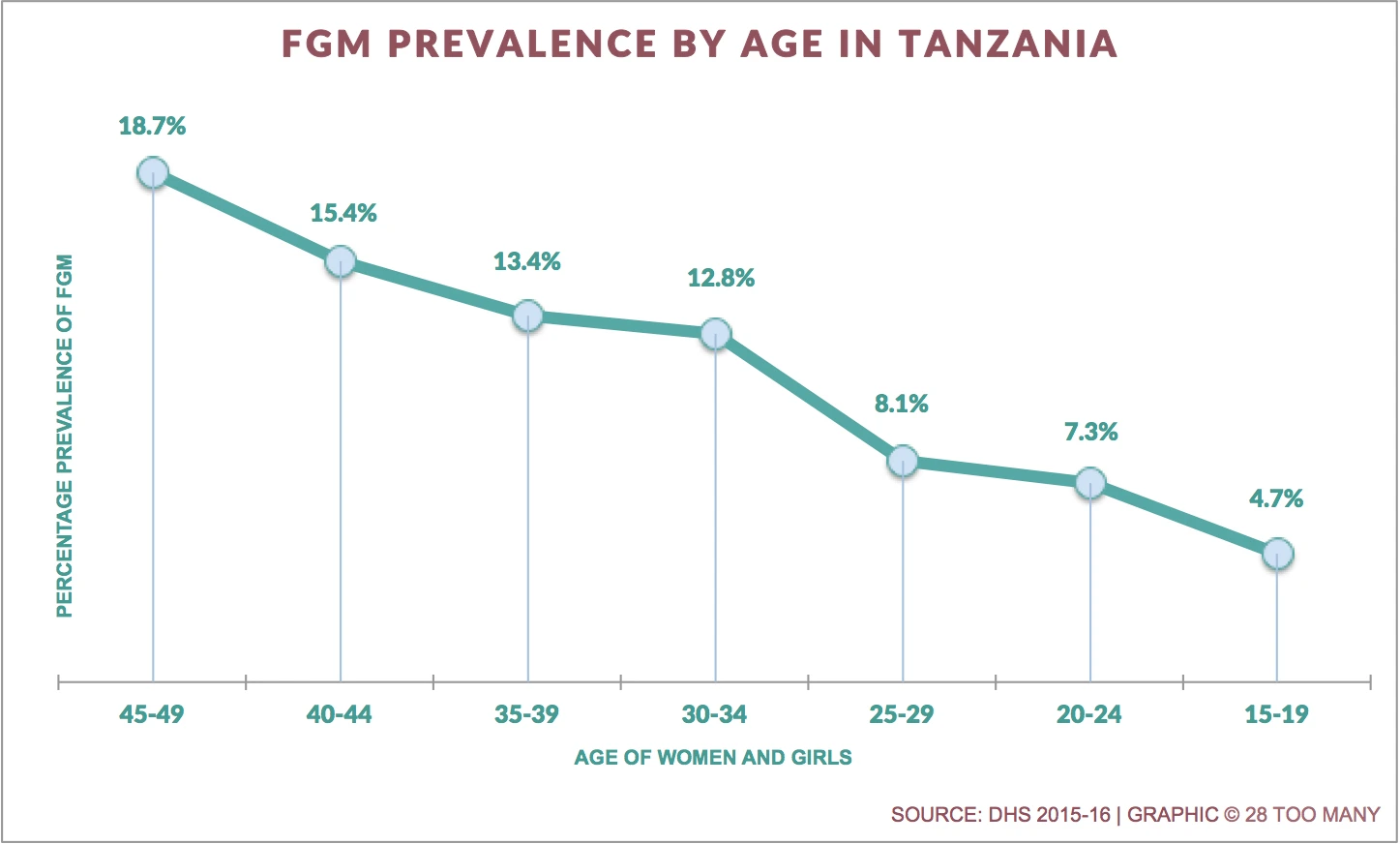
_cover.webp)
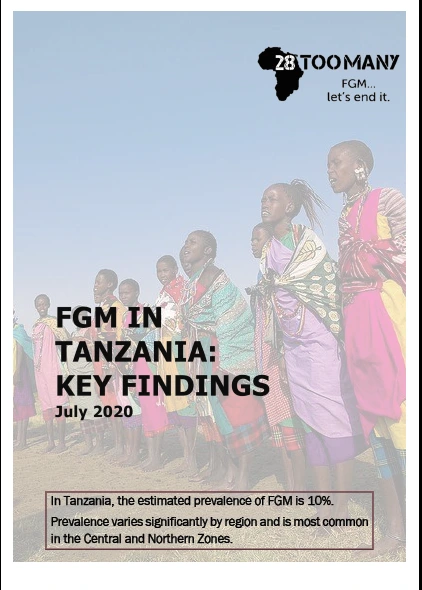
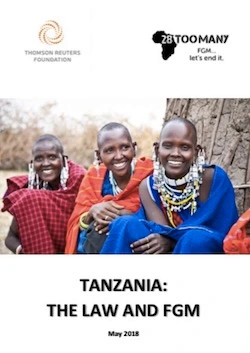
_swahili_cover.webp)
_english.webp)
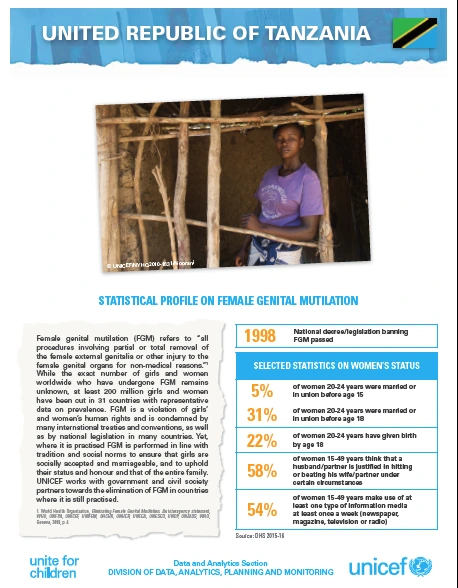
.webp)
.webp)
_swahili.webp)
